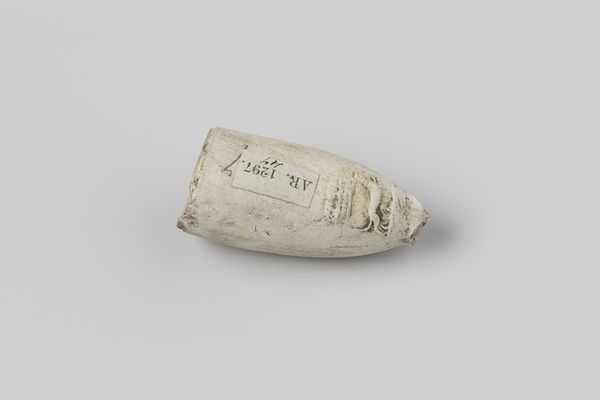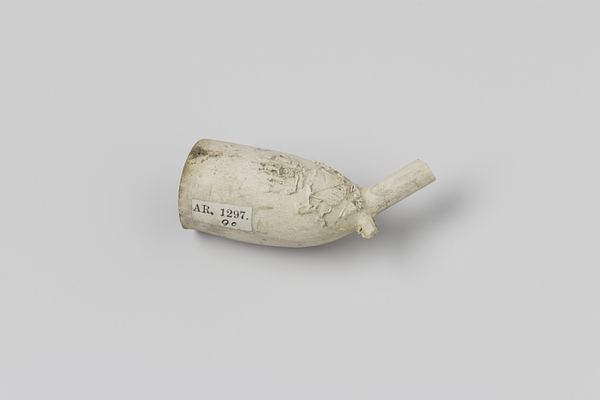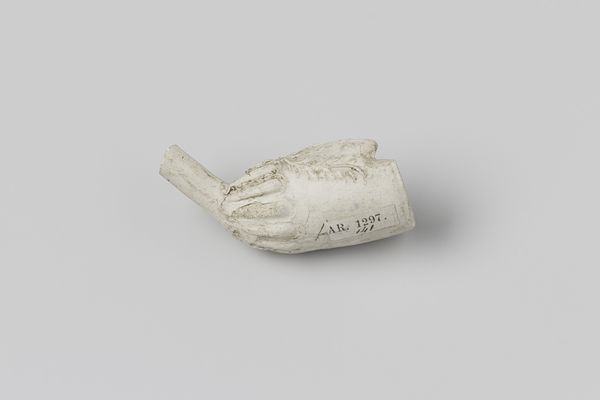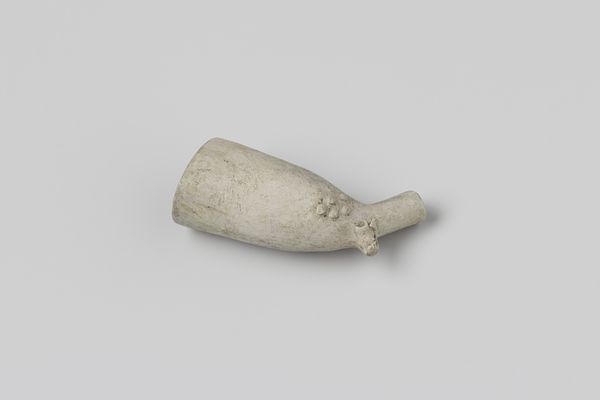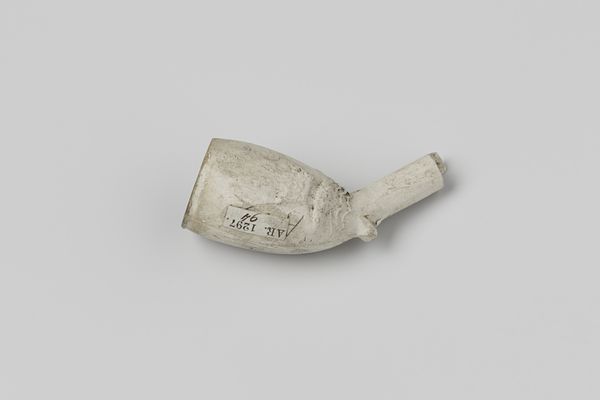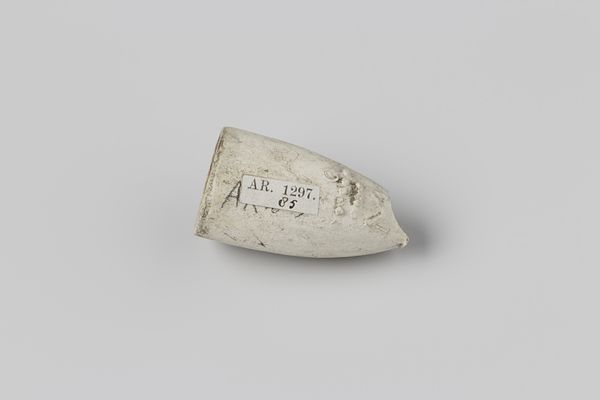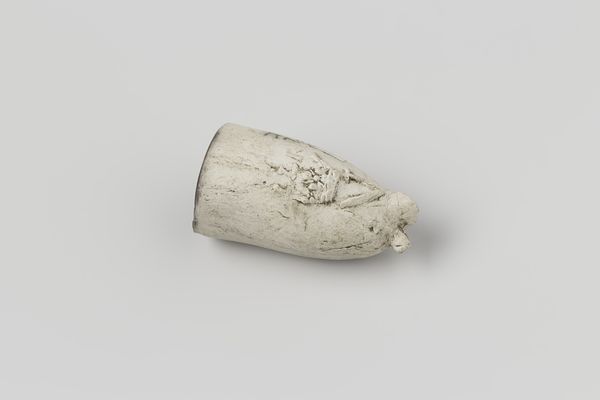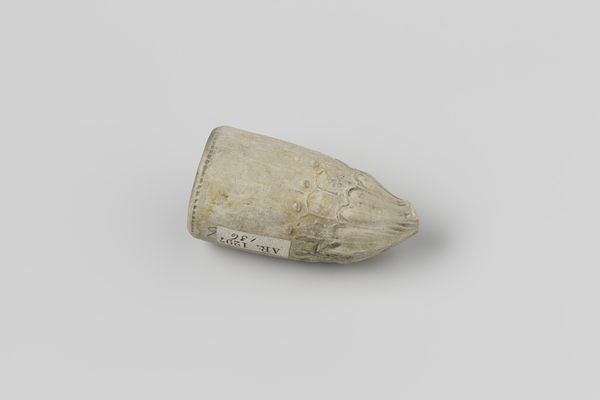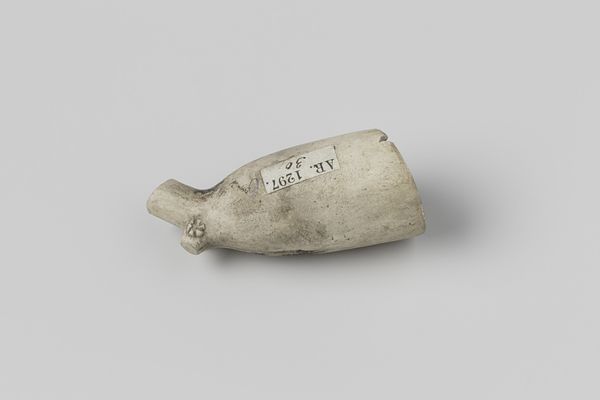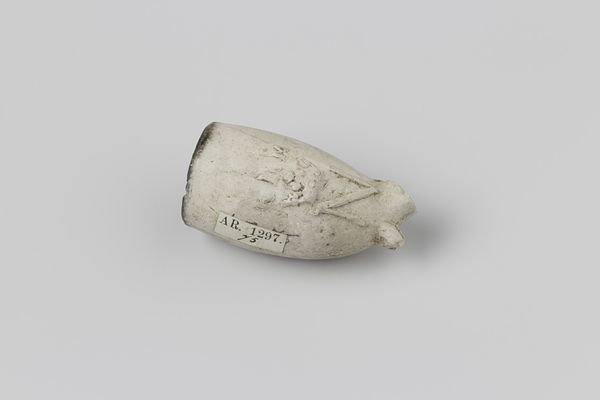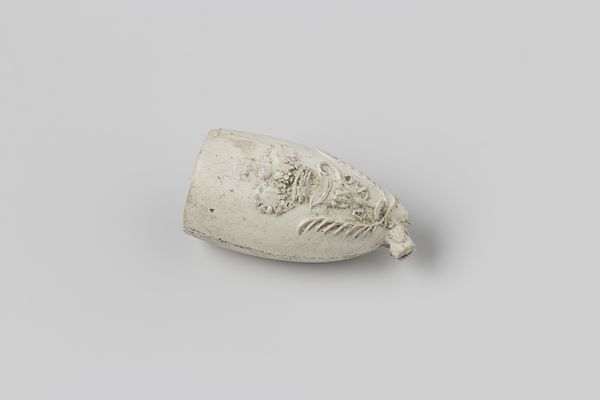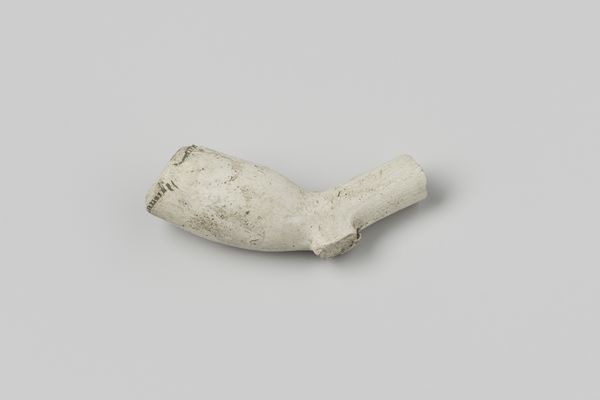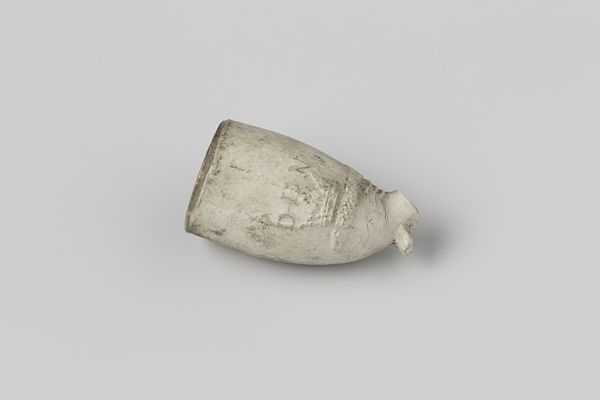
ceramic, earthenware
#
product photograph merchandise
#
product shot
#
3d printed part
#
ceramic
#
virtual 3d design
#
round design
#
curved arc
#
earthenware
#
product design photgrpaphy
#
3d shape
#
metallic object render
#
product mock up
Dimensions: length 4.0 cm, width 2.0 cm, length 5.8 cm
Copyright: Rijks Museum: Open Domain
Curator: Here we have a "Fragment tabakspijp," or tobacco pipe fragment, made of earthenware. It’s dated somewhere between 1740 and 1780, so well within the Dutch Golden Age of pipe making. What are your initial impressions? Editor: There's something unsettling about seeing only a fragment. It speaks of loss, perhaps a shattered ritual, or the transience of earthly pleasures. The object's pallid tone further enhances that somber atmosphere. Curator: It’s interesting you pick up on the visual texture. Note how the smooth bowl contrasts with the ribbed stem and the carefully scored opening—all features contributing to its functionality and tactile appeal. The simple lines direct the viewer's gaze along its form, celebrating its elegant geometry. Editor: Elegance maybe, but I see something more profound. The pipe symbolizes trade, colonialism, and addiction. These pipes were not innocent objects, but vectors of global exchange built on exploitation. Can we really ignore that? Curator: Indeed. Considering the materials—refined earthenware—one could discuss Dutch artistry and industry of that period. The delicate molding process reflects both skill and standardization, yet there's a subtle patina from handling and age which soften that crisp production. Editor: That patina tells a story, alright – a history that intersects with broader socio-economic narratives of colonial power, and the labor that produced both the pipe and the tobacco it carried. Who enjoyed it? At whose expense? These objects demand a layered reading, one rooted in critical awareness. Curator: Well, visually speaking, the artifact remains a compelling exploration in design. Editor: It demands acknowledging an array of historical experiences connected to the very trade it enabled, whether pleasurable, ignoble, and everything between. Thanks for bringing attention to the piece and, more specifically, those compelling forms and layers of context. Curator: Yes, our analysis reminds us that an object, even fragmented, speaks volumes—form and context intertwined in its existence.
Comments
No comments
Be the first to comment and join the conversation on the ultimate creative platform.

